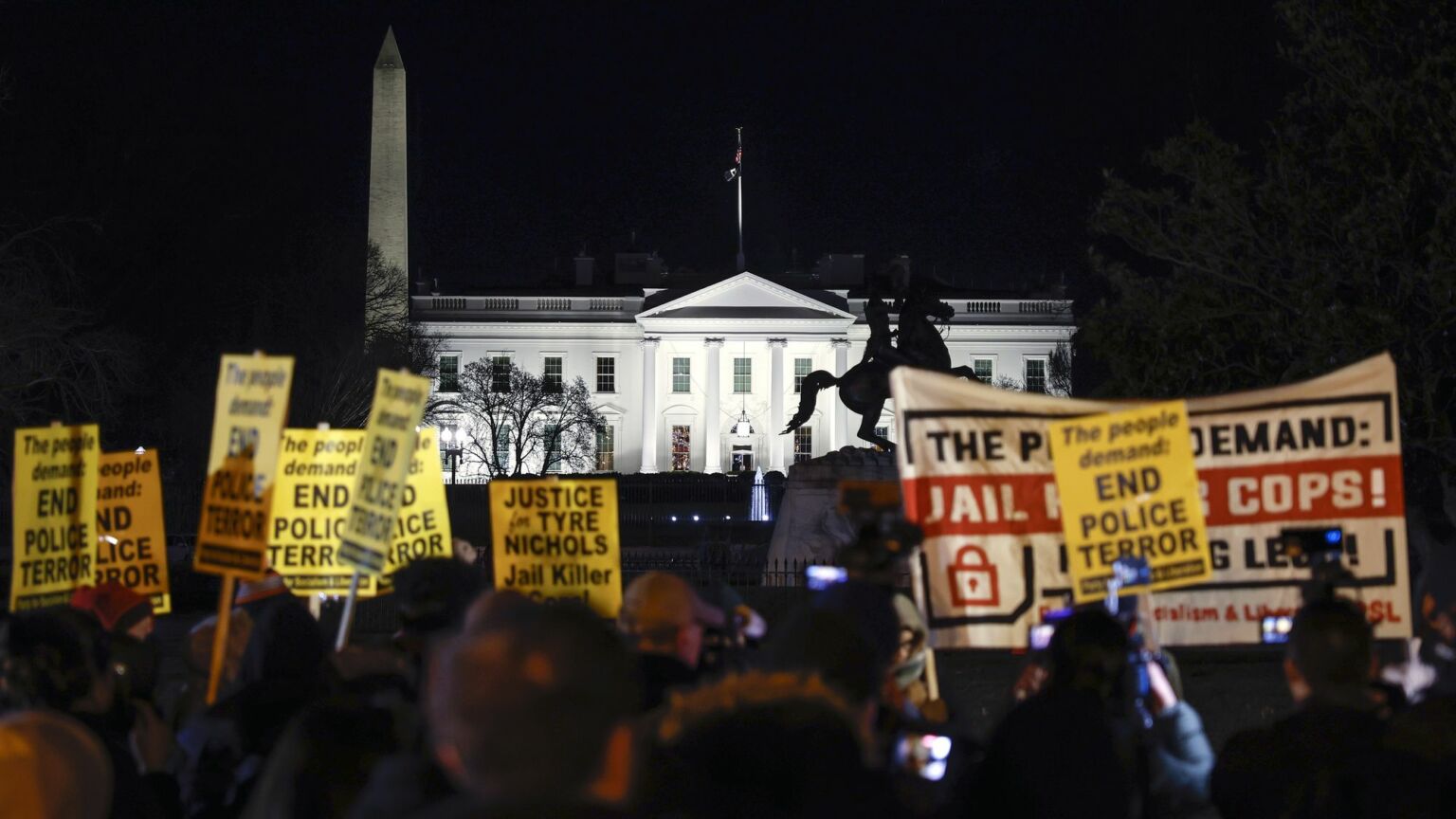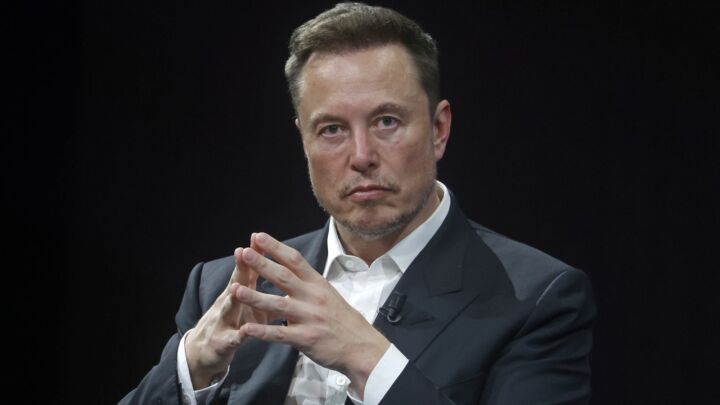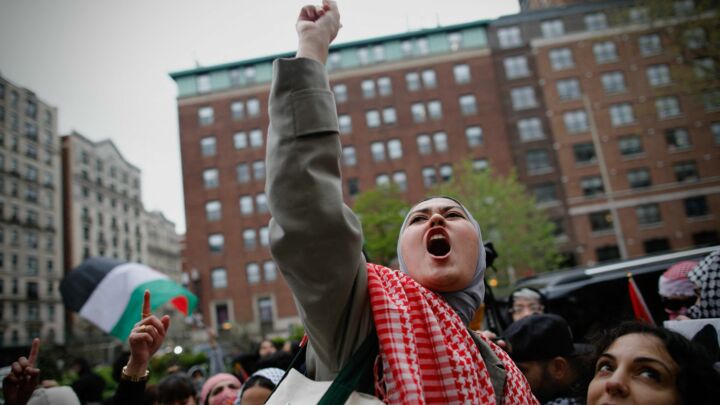‘Defunding the police’ is a threat to black life
US policing can be fixed – as long as we ignore the advice of BLM activists.

The senseless murder of Tyre Nichols, by five black Memphis police officers, was an undisputed tragedy. But it’s important to judge it in context.
For many on the American political left, the explanation for what happened was simple: white supremacy. Despite the officers involved being black, this was still held up as evidence of the continued victimisation of black men by police officers who too often resort to violence whenever they interact with ‘people of colour’. Michael Brown, Freddie Gray, George Floyd and other BLM martyrs, of varying degrees of actual innocence, have been cited in support of these claims, and have been used to fuel the ‘Defund the Police’ narrative.
This take is wrong. We shouldn’t demonise policing and policemen simply because the annual number of problematic killings is above zero. According to the Washington Post’s excellent database, about 25 unarmed black Americans were killed by police gunfire annually from 2015 to 2018. The figure is only at 25 because of an atypical 37 killings in 2015. Over the past four years, in fact, the number of unarmed black Americans killed annually by police gunfire stands at 12. In contrast, far more police officers are shot and killed in the line of duty each year – 314 police officers were shot and 58 were killed in 2021 alone.
While the left highlights the fact that black Americans are killed by police at two-to-three times the rate that would be expected from their share of the population, it neglects to mention the most glaringly obvious reason for this. Black Americans are a far younger, more urban and more working-class population than are white Americans. Largely as a result of this, they are disproportionately perpetrators of violent crimes. They therefore come into contact with the law more often than other sections of US society. According to recent figures from the Bureau of Justice Statistics (BJS), black Americans are at least five times as likely as whites to commit murders and nearly three times as likely to commit violent crimes overall.
Moreover, the homicide problem in specifically black communities has grown significantly since the killing of George Floyd in 2020 – with the annual number of murders surging to over 20,000 and black-perpetrator homicides passing the 10,000 mark in both 2020 and 2021. There are now significantly more black (60 per cent) than ‘white and other’ (40 per cent) homicide victims annually, despite the fact that black Americans make up only 12 to 13 per cent of the US population. This entirely new level of blood-letting is the true crisis faced by black American citizens living in struggling neighbourhoods – not the phoney risk of ‘genocide’ at police hands, as BLM claims.
None of this excuses terrible police work, such as that which cost Tyre Nichols his life. However, as Bob Maranto and I have noted, perhaps the most serious problem with the BLM-inspired ‘defund the police’ narratives is that they utterly ignore potential changes to policing that might actually work. Over the past two decades, well-documented police-community coordination in major cities has been effective at reducing the number of black men killed by police, and even the share of black men engaged in violent behaviours.
Over the past decade, many police forces have begun to dramatically revamp their use of force and rethink citizen-interaction policies. Sometimes this has been prodded by federal intervention – particularly after the 2015 Department of Justice investigation into policing techniques in the troubled city of Ferguson, Missouri. As leading criminologists like David Kennedy and Thomas Abt have pointed out, police forces working with community groups have had success targeting a small number of the most ‘at risk’ men in high-crime neighbourhoods. The technique is simplicity itself: offer these potential offenders (and potential victims) strong positive incentives if they begin to turn their lives around, but harsh penalties if they do not.
Memorably, in the summer of 2020, the defunding movement proposed replacing police officers with social workers and community ‘violence disruptor’ groups. It was not entirely wrong about the role social workers can play as part of an anti-crime strategy. However, the activists failed to recognise that these groups cannot act independently of the police. Social workers, in particular, cannot effectively respond to serious situations of domestic or family violence alone – since most are young untrained women and these troubling cases often involve serious criminals armed with guns or knives. Independent ‘peace-makers’ are just tax-paying citizens – they have no access to the databases that police officers use to proactively interact with high-risk men, or any real ‘sticks’ to use to force compliance with the law. Social work and community activism can work only as an addition to better-funded and more proactive police departments, not as an alternative to them.
Other practical strategies for improving policing can work, too. As Maranto and I note, New York City – perhaps surprisingly one of the US’s very top police departments – simply fires all officers who pick up more than two or three verified citizen complaints, or demotes them to hated jobs, such as in the departmental motor pool. Maintaining a strong, well-funded Internal Affairs division, and even requiring officers to fill out an awkward 40-plus page report every time they unholster a firearm, have proven to be effective violence-reduction strategies as well. The prospect of bureaucratic tedium really can keep officers in check.
It is also clear what does not work to improve policing – the BLM-promoted strategy of reduced stop rates by lower-funded police departments. As Jason Johnson of the Law Enforcement Legal Defence Fund notes, when arrests recently plunged by 38 per cent in New York City, homicides rose 58 per cent – by more than 100. In Chicago, the equivalent figures were 53 per cent and 65 per cent. In Louisville, Kentucky, stops dropped by 35 per cent, arrests dropped by 42 per cent and murders rose 87 per cent. As Travis Campbell of the University of Massachusetts observes, the response of cities to major Black Lives Matter marches does appear to correlate with a slight decline in police shootings, but also with a remarkable surge of 1,000 to 6,000 more annual homicides nationally.
Given all this, what the horrific Tyre Nichols case reveals is not ‘black white supremacy’ but the flaws in the currently popular woke model of how to fix policing. Race doesn’t seem to have played a huge role in Nichols’ killing one way or another. More significant is the fact that the ‘hired from the hometown’ officers who allegedly beat Nichols to death were recruited under ‘dangerously lowered’ standards – two of those involved in Nichols’ death were sworn in back in August 2020, after Memphis Police Department had decided to attract more minorities by lowering education requirements. These lawmen were assigned to an almost irrationally aggressive anti-crime unit (called ‘SCORPION’), which was established precisely because crime had surged so much in Memphis – and everywhere else – following George Floyd’s killing and the Great Police Pullback. A decent man lost his life as a result.
We know what might save 10 or so ‘black lives’ every year from police shootings. And we know that these approaches might also protect a great many citizens from being knocked over the head with a brick by muggers. Yet too many on the left are happy to mouth inane ‘defund’ slogans and push dangerous policies. In doing so, they are harming the very people on whose behalf they claim to speak.
Wilfred Reilly is a spiked columnist and the author of Taboo: 10 Facts You Can’t Talk About, published by Regnery. Follow him on Twitter: @wil_da_beast630
Robert Cherry is a recently retired Brooklyn College economics professor and author of Why the Jews? How Jewish Values Transformed Twentieth Century American Pop Culture, published by Rowman & Littlefield.
Picture by: Getty.
To enquire about republishing spiked’s content, a right to reply or to request a correction, please contact the managing editor, Viv Regan.








Comments
Want to join the conversation?
Only spiked supporters and patrons, who donate regularly to us, can comment on our articles.